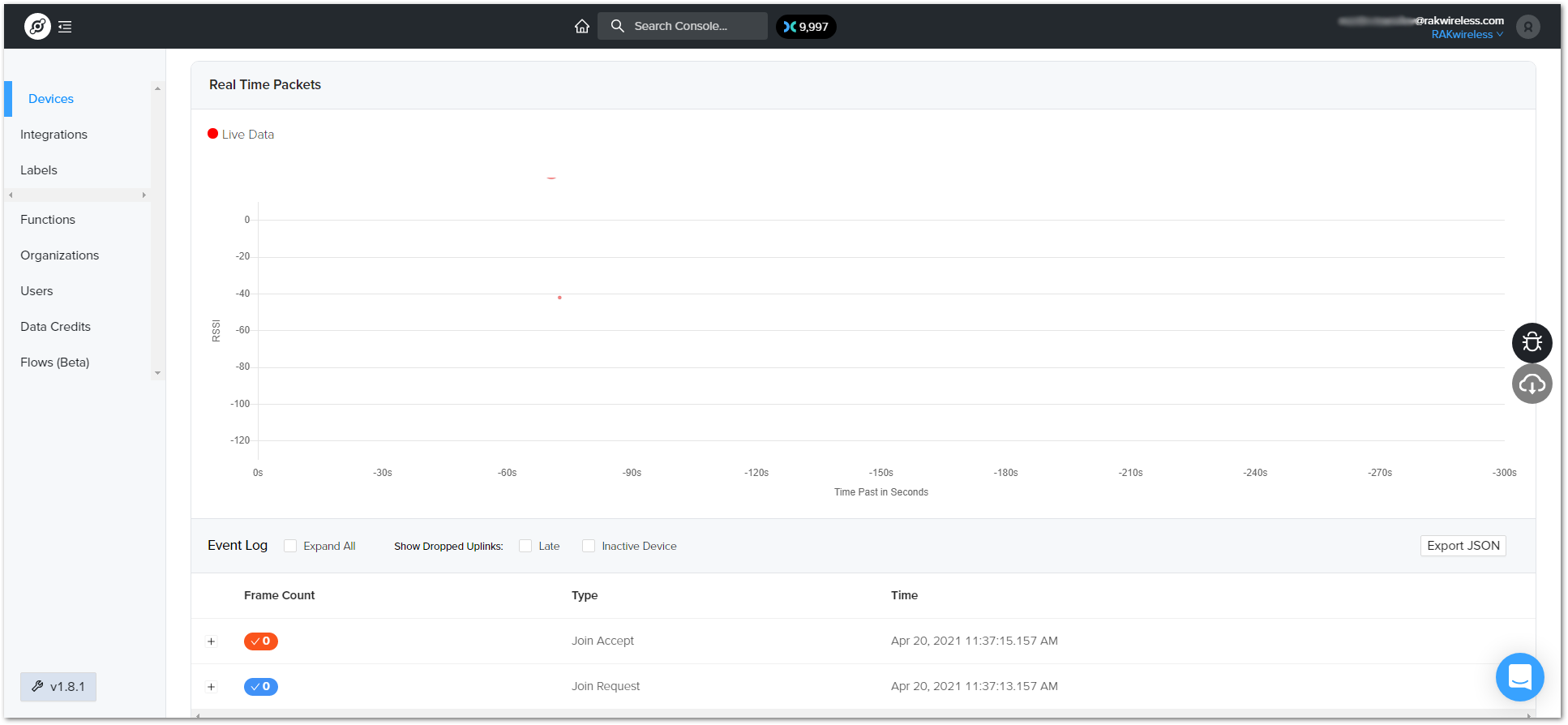RAK7431 WisNode Bridge Serial
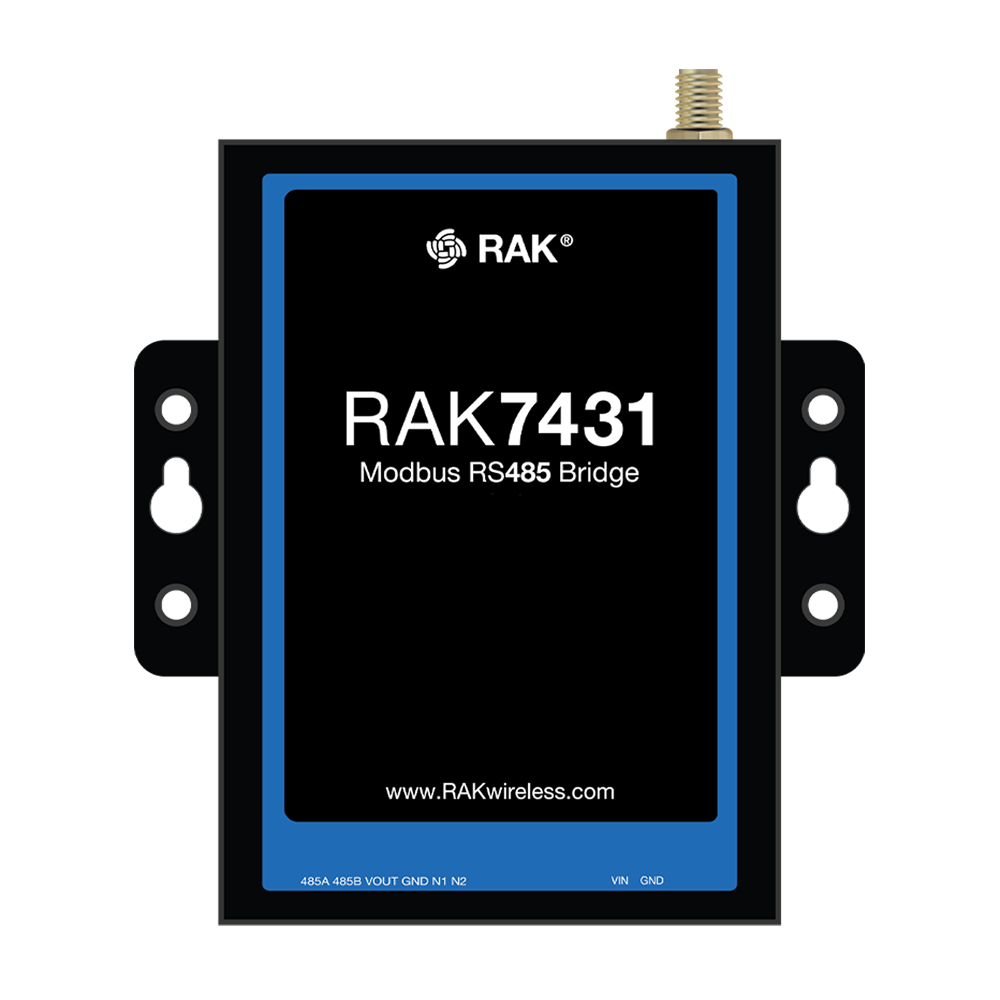
Overview
RAK7431 WisNode Bridge Serial is an RS485 to LoRaWAN converter designed for industrial applications. The device relays ModBUS data using the LoRaWAN network as means of wirelessly transmitting to and from the end-devices.
RAK7431 can operate in all of the LoRaWAN bands within the standard parameters defined by the LoRa Alliance. Its open environment range is 15+ km, and in industrial cases, where there are heavy obstructions in the path of the RF signal performance is improved compared to conventional wireless systems due to the characteristics of LoRa as a modulation technique. This allows for consistently good signal quality within the confines of large factories, densely populated offices, storehouses, etc.
This RS485 compatible device can address up to 16 client terminal nodes. The conversion from and to LoRa frames is seamless and allows for real-time control and monitoring of multiple RS485 devices, and bus data to access and control the RS485 terminal nodes.
RAK7431 together with RAK gateway and LoRa Server products, can easily and quickly build a wireless industrial field control system. It adopts industrial protection design, supports a wide range voltage supply, supports wall mounting and DIN rail installation, and facilitates field installation and use.
Product Features
- LoRaWAN 1.0.3 protocol stack, supports Class A, B, & C.
- Working modes: Polling mode, Transparent mode, and Packet mode.
- Remote cloud management of RS485 devices.
- Can address up to 16 RS485, a que with up to 32 instruction sets.
- Industrial grade STM MCU: ultra-low power (4uA sleep) and wide temperature range of operation.
- Wide range of input voltages, 8-48V DC input.
- Can power RS485 devices via a dedicated output.
- Mounting: Wall, DIN rail, and magnetic mounting.
- Compliant with IEC61000-4-2, IEC61000-4-4, and 18kV HMB ESD protection.
Useful Resources
Connecting to Helium (The People's Network)
tip
Before going through each and every step in connecting the RAK7431 to Helium, it is recommended to check first our Quick Start Guide.
Helium has quickly become the most widespread LPWAN communal network with more than 27,000 devices deployed globally. All the RAKwireless node products are compatible with it and the process of adding a device to the network is intuitive and straightforward.
This section will focus on giving a brief guide on how to connect the RAK7431 to the network console, assuming that there is a Helium Hotspot within range.
Log in or create your account here.
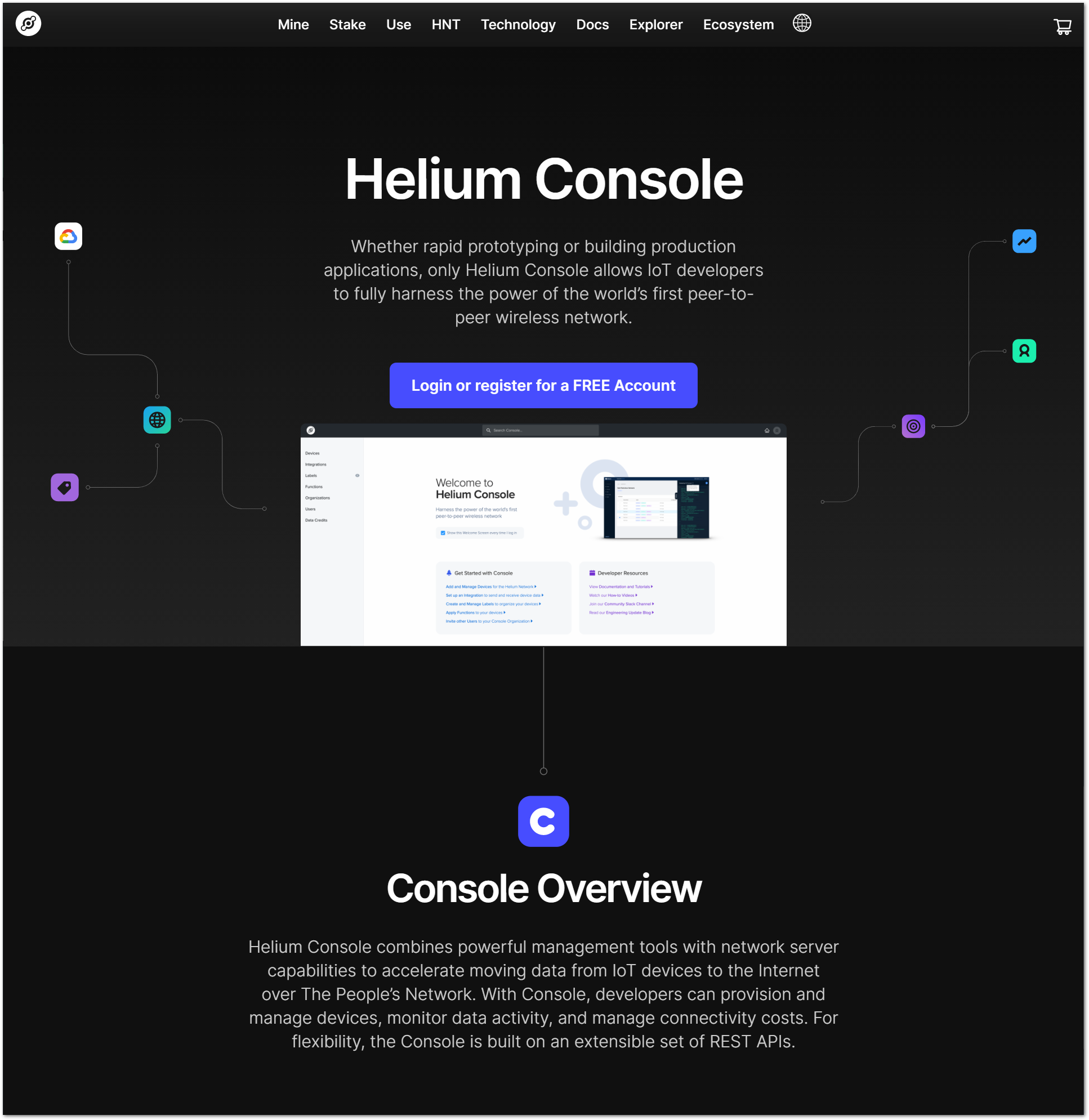
Once registered/logged in, you will end up at the home page, where you can see your function tree on the left and DC balance at the top, as well as a number of useful links.

Go to the Devices section in the function tree. There will be no registered devices if this is your first time doing this. To add a device, click the + Add Device button and get started.
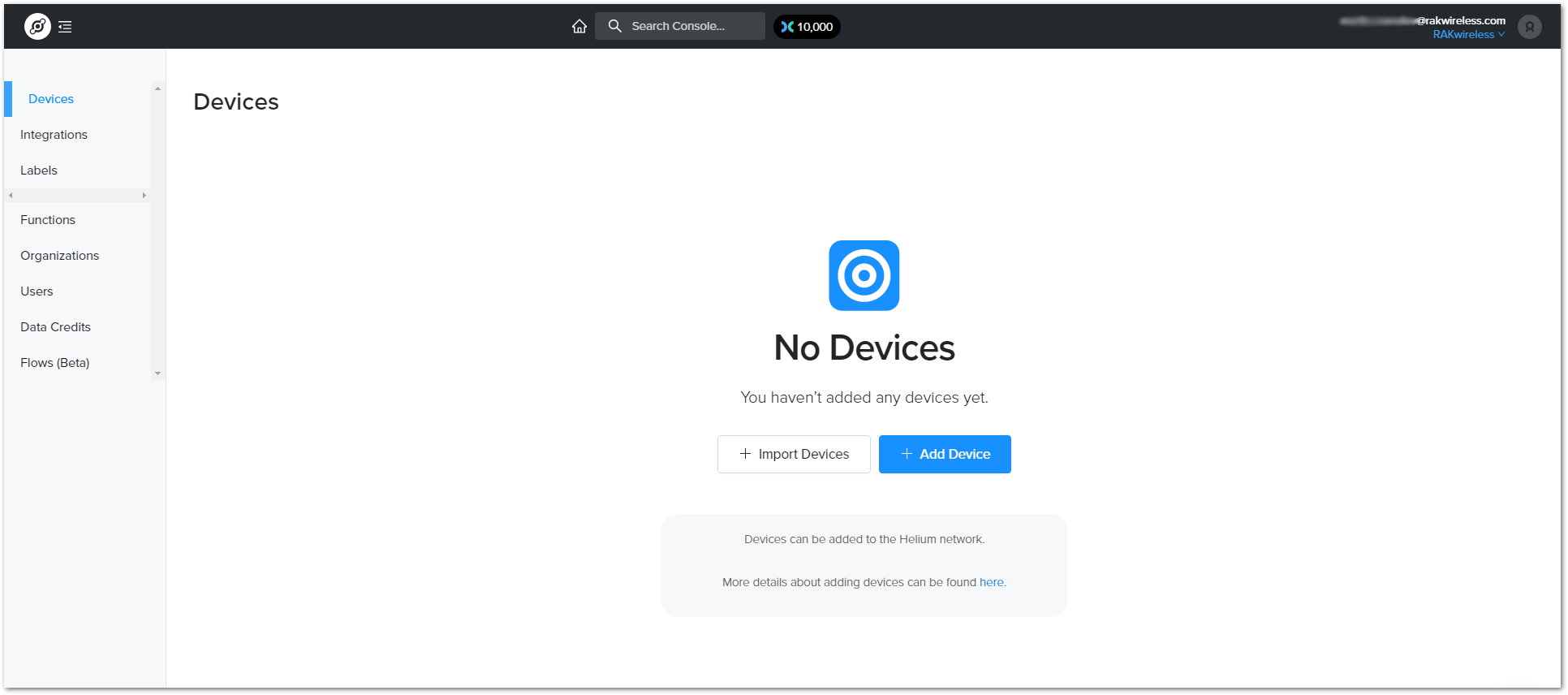
A window will pop up with a set of fields containing the device parameters required for its registration.
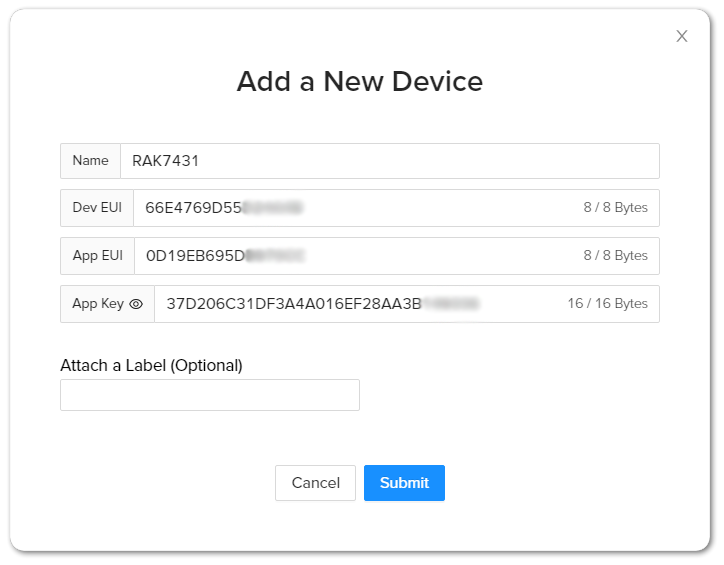
Fill in a name of your choosing. The Dev EUI, App EUI, and App Key will have random values generated for you by default. Press the eye icon to reveal the values. You can manually replace them with values of your own. For this tutorial, default values are used. Press the Submit button, and you are done.
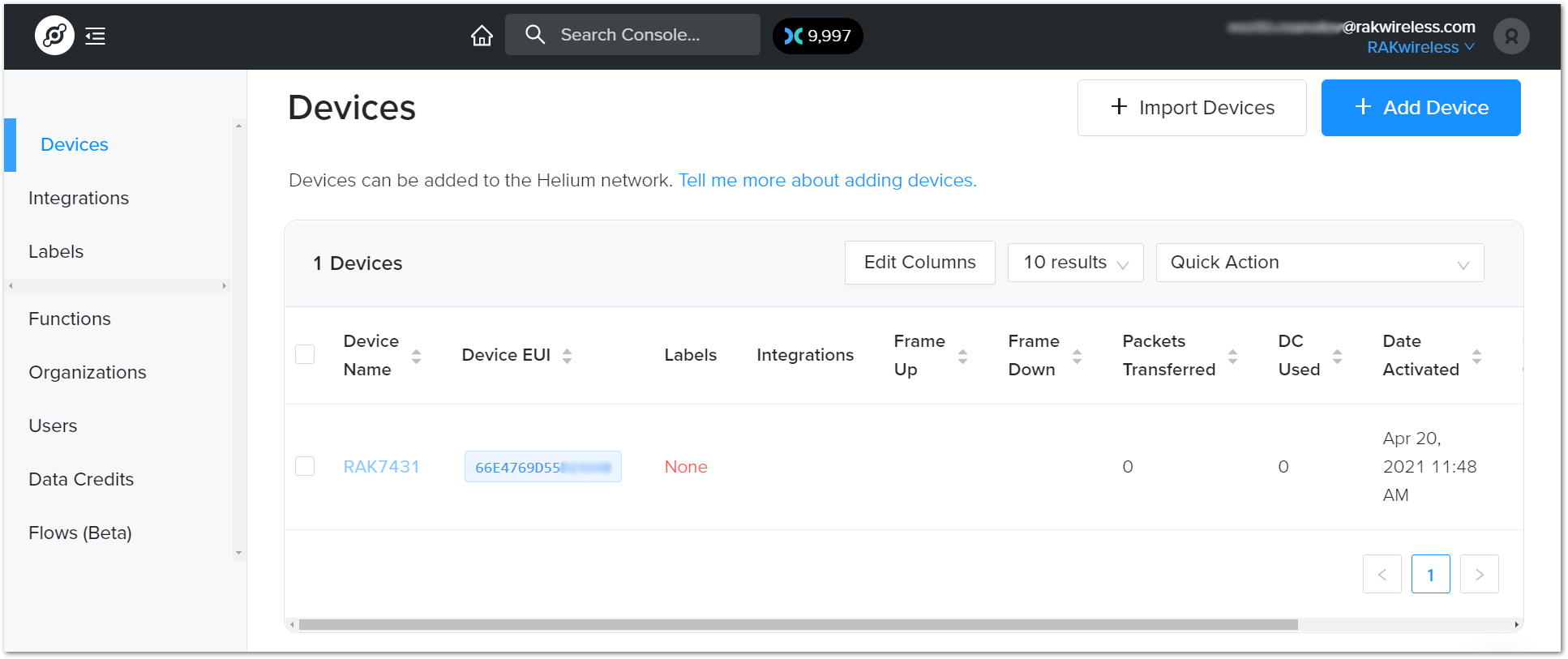
Now, your RAK7431 is registered and is awaiting activation. For this to happen, import the Dev EUI, App EUI, and App Key in the RAK7431 using the RAK Serial Port Tool.
Open the tool, select the desired port (default baud rate) and open it. Then start importing your settings.
Configure your LoRa band and activation mode. This tutorial will be using the EU868 band and OTAA (the only option available for now with Helium) with device class A (the default one does not need configuring).
- Regional band, device class, and activation mode setting
at+joinmode=OTAA
at+region=EU868
- Enter the Dev UI
Use the command below by replacing the XXXX with your Device EUI from the Helium console:
at+deveui=XXXX
- Enter the App EUI
The same as with the Device EUI, replace the XXXX with your value:
at+appeui=XXXX
- Enter App Key
Finally, fill in the App key with the command:
at+appkey=XXXX
- Join Network
Run the following AT command for the node to join the network. Once the procedure is initiated and completed, you will have a notification in the serial console.
at+restart
Your output should resemble the one in figure below:
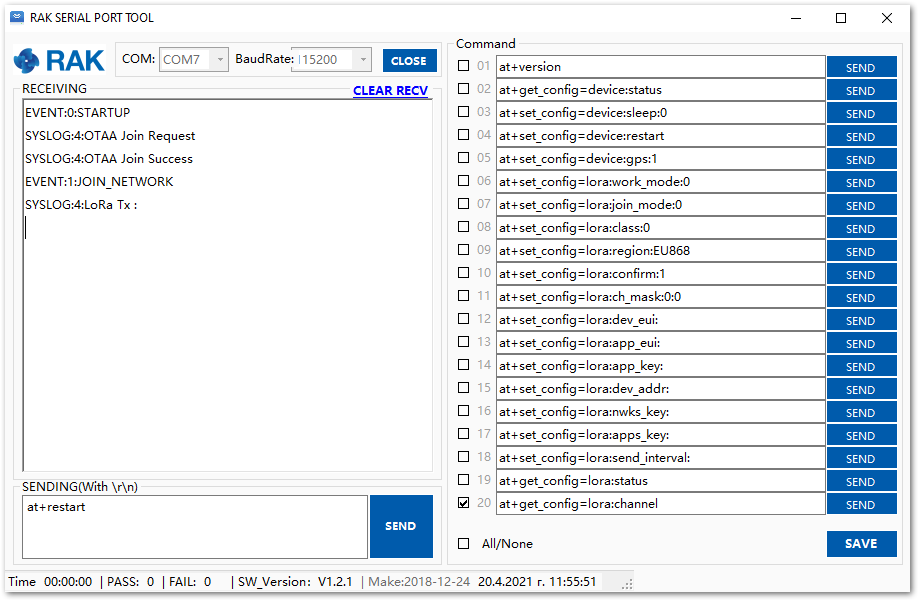
If you take a look at the Helium console, you will also see the join request packets both in the graph and event log. Your node is now a part of the Helium Network.
